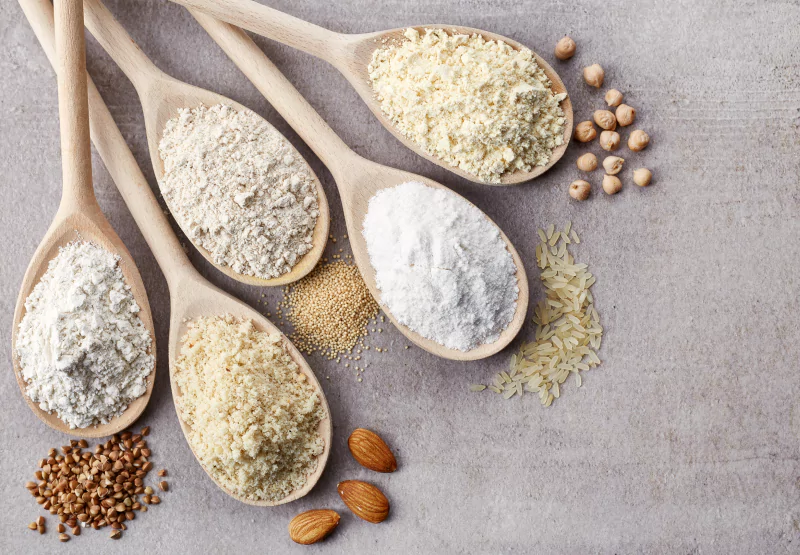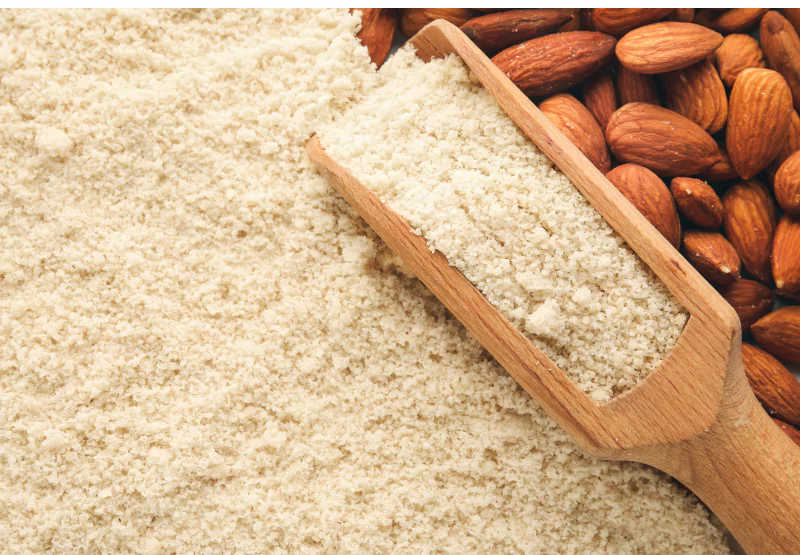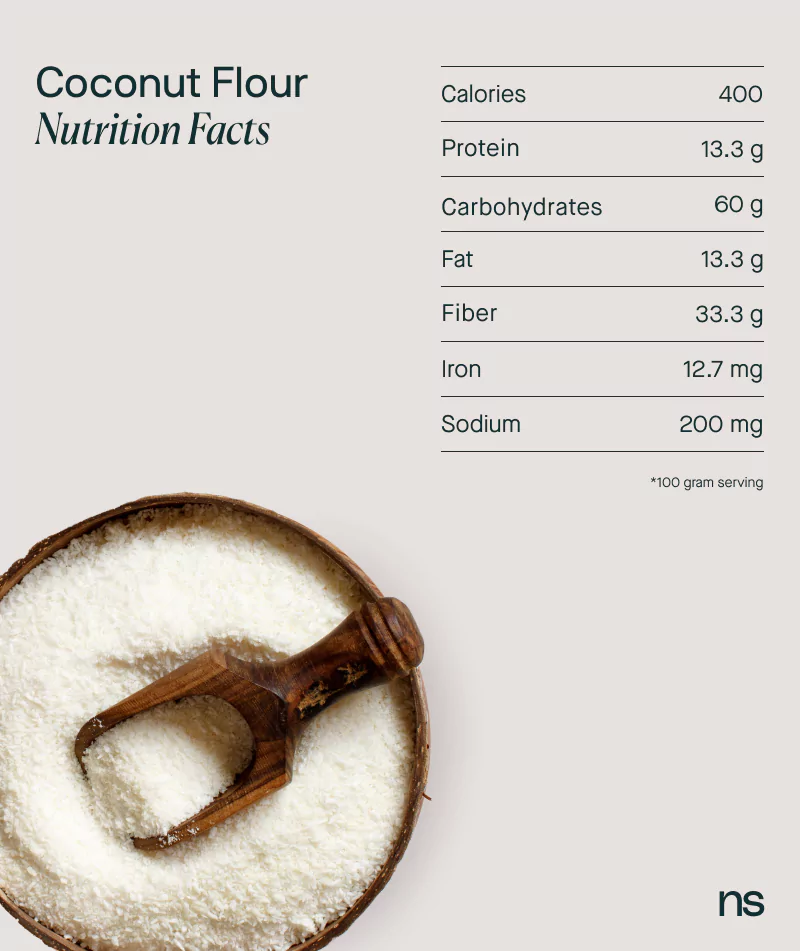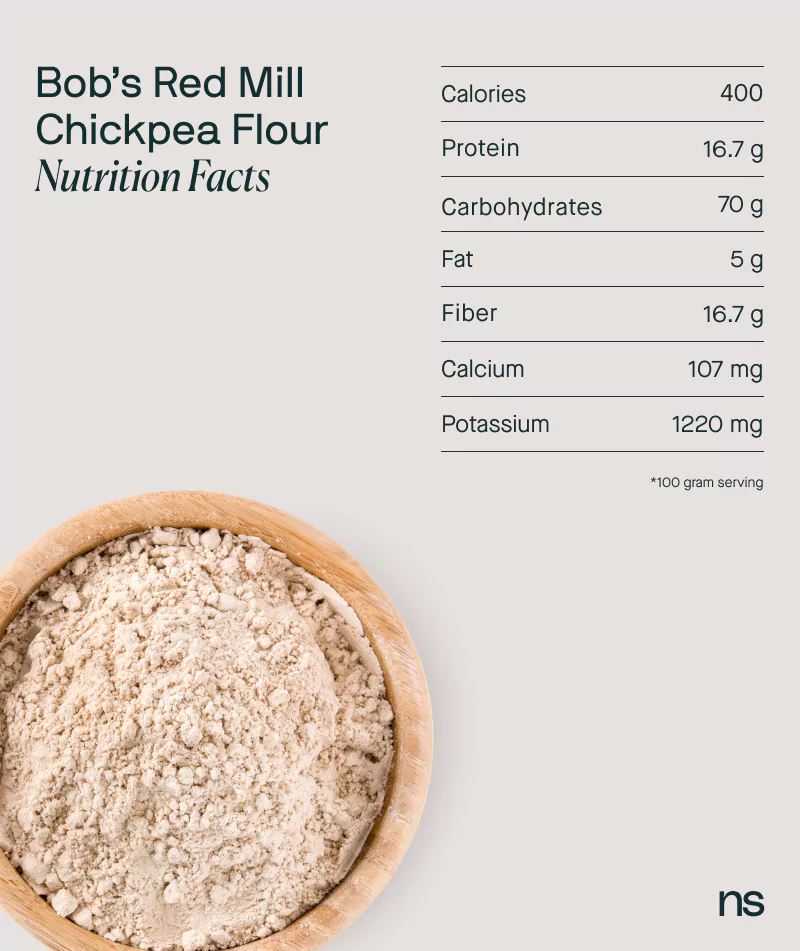Healthy Flour Alternatives: The Best Gluten-Free Flour Choices

Key Takeways
If you’re someone living with Celiac disease or a gluten intolerance, you may be familiar with the many substitutes for whole wheat and all-purpose flours.
Eating gluten, for those who have Celiac disease or diagnosed intolerances, can have many undesirable effects on your well being and quality of life. For many people, however, making the switch from consuming gluten to being-gluten free is not easy.
Luckily, with all the gluten-free flour options out there, you can still make and enjoy your favorite baking recipes. But, are gluten-free flours healthy? And which options are the best for a healthy gluten-free diet?
Let’s break down some of the best gluten-free flours and what they are best used for.
Types of Gluten-Free Flour

There are over a dozen varieties of gluten-free flour (or GF flour) to choose from. So, if you are someone who follows a gluten-free diet, the good news is that you’ll never be bored with all the different options! Here are some of the many gluten-free flour substitutes:
- Almond flour
- Sorghum flour
- Rice flour or sweet rice flour
- Chickpea flour
- Buckwheat flour
- Chestnut flour
- Coconut flour
- Oat flour
- Tapioca flour
- Cornstarch or potato starch
- Cassava flour
- Amaranth flour
- Potato flour
- Teff flour
- Arrowroot flour
When it comes to baking, many brands such as Cup4Cup, King Arthur, and Bob’s Red Mill gluten-free baking flour also offer blends that serve as an all-purpose gluten-free flour substitute for things like bread recipes, cupcakes, waffles, chocolate chip cookies, and even brownies.
Most Popular Gluten-Free Flours

Similarly to the boom of oat milk and other plant-based milks, there are a variety of new gluten-free flour options that seem to be gaining popularity in recent years.
There are also a few popular gluten-free options that have stood the test of time. Here are some of the most popular gluten-free flours that may be easiest to find in your local grocery store.
Almond Flour
Almond flour is made of blanched, ground almonds and is one of oldest gluten-free flours out there. The almonds are usually finely ground using a grinder, but you can also make it at home using a food processor.
Almond flour has a soft, fluffy texture and neutral taste that works well for things like pizza crust or flatbread. Many recipes use this flour as an all-purpose gluten-free flour as it is relatively easy to work with. So if you’re new to gluten free flours, this may be a great staple to have on hand.
It’s also suitable for breading, though it may not have the same crispy texture as breadcrumbs or regular flour. If that’s what you’re looking for, it may be better to use something like cornstarch or tapioca starch.
Nutritional Content of Almond Flour
As almond flour is derived from almonds, it’s a good source of healthy fats and protein. Almonds also contain a wide variety of vitamins and minerals, and have been shown to be positive for gut health.
According to Dr. Charles M. Carlsen of DRSONO Medical, "almond flour is primarily made up of healthy unsaturated fats, which have been linked to numerous health benefits. These include improved heart health and reduced risk of chronic diseases such as diabetes and obesity."
However, ifyou’re on a weight loss journey, you may want to be cognizant of the fat content and calorie count of almond flour. This flour is significantly higher in fat and calories than regular all-purpose flour, which contains 364 calories and one gram of fat per 100 grams.

Coconut Flour
Coconut flour is another popular flour. The preparation of this flour actually begins when coconuts are being made into coconut milk.
During the process of making coconut milk, the coconut flesh is squeezed to extract the liquid. That same coconut flesh is then dried at a low temperature and then ground into coconut flour.
Coconut flour has a mild and sweet taste, and its texture tends to be a little more grainy than the other gluten-free flours. It’s great for bakers trying out gluten-free recipes since it can add a hint of that distinct, sweet coconut taste to cookies or cakes.
Nutritional Content of Coconut Flour
In comparison to almond flour, coconut flour has a higher fiber and carbohydrate content. It’s also lower in fat and protein, though it still contains moderate amounts of each.

Chickpea Flour
This flour isn’t as popular for at-home baking or cooking, but is commonly used as a substitute in gluten free-products such as pasta and grain-free rice. Chickpea flour is made by grinding dried, raw chickpeas (or garbanzo beans) into a fine powder.
Chickpea flour has a neutral taste, which makes it a great substitute for items such as chickpea pasta. Because this flour is made of chickpeas, which are a type of legume, this flour tends to be high in fiber.
Nutritional Content of Chickpea Flour

Rice Flour
Rice flour, like chickpea flour, is commonly used as a substitute in prepared foods such as pasta, pizza, and many pastries. There are usually two main types of rice flour: white rice flour (usually refined and/or enriched), and brown rice flour.
Rice flour is similar to all-purpose flour in terms of texture. It also has a neutral taste, which can make it a good substitute to use in savory dishes.
Nutritional Content of Rice Flour
Brown rice flour may be a better source of magnesium, phosphorus, and potassium than white rice flour (unless it’s enriched). So if you want a more nutrient-dense rice flour, brown rice is the way to go.

Cassava Flour
Cassava flour is a classic addition when it comes to gluten-free flours. This flour is made from cassava, which is a starchy root vegetable, and is also similar in texture to all-purpose white flour.
Cassava flour is often used to make gluten-free tortilla chips, gluten-free bread, and other baked goods. Tapioca flour is also made from the cassava root, but only the starchy part of the vegetable is used in its production.
Nutritional Content of Cassava Flour

Are Gluten-Free Flours Healthy?
Whether or not a food is “healthy” may vary depending on the person. There are a lot of factors to consider apart from the nutrients a food contains, including how your unique body reacts to certain food items.
Another important factor to consider is that while gluten-free diets may be necessary for those who have Celiac disease, research suggests that there may not be any positive benefits for people without this disease. In fact, one study found potentially negative effects on overall wellness for non-Celiac people who intentionally avoided gluten.
You may want to consult with your doctor or dietitian before making any significant dietary changes.
Gluten-Free Flour and Blood Glucose
How gluten-free flours affect blood glucose may depend on the type of flour used, and the nutrients in those flours. Like all-purpose white flour, many gluten-free flours can be high in carbohydrates as we saw above.
Dr. Carlsen continues, "some gluten-free flours have been shown to have a lower glycemic index compared to traditional wheat flour. This means that they are less likely to cause a spike in blood glucose levels after consumption. For this reason, gluten-free flours such as almond flour can be beneficial for individuals with diabetes or those looking to manage their blood sugar levels. However, it is essential to note that gluten-free flours are not necessarily low in carbohydrates, and therefore should still be consumed in moderation."
Almond flour, for example, has a higher fat and protein content than other GF flours, and is also relatively low in carbohydrates. Almonds also have a glycemic index of one, making this flour a safe choice in general when it comes to blood sugar.
Chickpea flour, on the other hand, is higher in carbs, but it’s also a good source of protein and fiber, which has been linked to lower blood sugar in those with insulin resistance and type 2 diabetes. It has a GI of 35, which is considered low, meaning that it may be associated with a relatively lower glycemic response.
Coconut flour contains a high amount of fiber than most other gluten-free options, though it is lower in protein and higher in overall carbs compared to almond flour. As we mentioned, the higher fiber content may be beneficial for supporting a healthy blood glucose response, though portion sizes and other factors may also play into this.
Because everyone is different, you may want to experiment with different gluten-free flours and see which one works best for you. A dietitian or healthcare professional can work with you to determine which dietary choices better suit your individual needs.
Gluten-Free Flour and Food Sensitivities

For those who have Celiac disease or non-Celiac gluten sensitivity (NCGS), any of these flours may be a good substitute. However, some people may have additional food sensitivities.
For example, many people with NCGS may also react to other grains. If you’re one of those people, you may want to speak with a registered dietitian about the best flour alternatives for you.
Raw almonds and chickpeas can be high FODMAP foods if eaten in large quantities. If you have a sensitive gut or are sensitive to FODMAPs, you may want to opt for an alternative to almond or chickpea flour.
Find the right Nutrisense programto turn insight into progress.
Go Beyond Glucose Data with Nutrisense
Your glucose can significantly impact how your body feels and functions. That’s why stable levels are an important factor in supporting overall wellbeing. But viewing glucose isn't enough. Nutrisense, you’ll be able to learn how to use your body's data to make informed lifestyle choices that support healthy living.
One-to-one coaching
Sign up to access insurance-covered video calls to work with a glucose expert: a personal registered dietitian or certified nutritionist who will help tailor your lifestyle and diet to your goals.
Monitor and measure what matters
With the Nutrisense CGM Program, you can monitor your glucose with health tech like glucose biosensors and continuous glucose monitor (CGM)s, and analyze the trends over time with the Nutrisense App. This will help you make the most informed choices about the foods you consume and their impact on your health.
Find your best fit
Ready to take the first step? Start with our quiz to find the right Nutrisense program to help you take control.

Heather is a Registered and Licensed Dietitian Nutritionist (RDN, LDN), subject matter expert, and technical writer, with a master's degree in nutrition science from Bastyr University. She has a specialty in neuroendocrinology and has been working in the field of nutrition—including nutrition research, education, medical writing, and clinical integrative and functional nutrition—for over 15 years.




